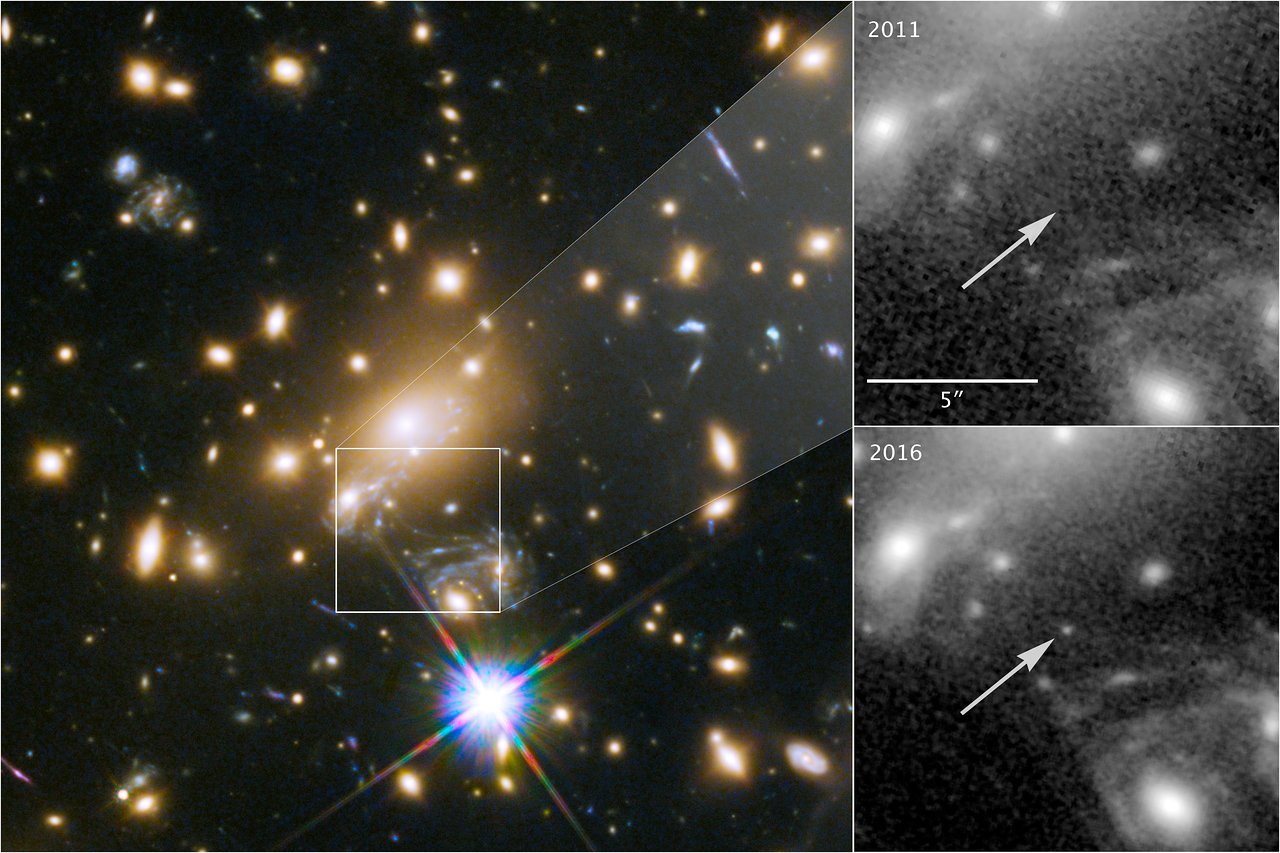In 1990, the
*Hubble Space Telescope*
was placed into Low Earth Orbit. Since then,
Hubble
has gone on to become the most well-known space observatory and has revealed some never-before-seen things about our Universe. Despite the subsequent deployment of several flagship telescopes - like the
*Kepler Space Telescope*
, the
*Chandra X-ray Observatory*
and the
*Spitzer Space Telescope*
-
Hubble
is still accomplishing some amazing feats.
For instance, a team of astronomers recently used
Hubble
to locate the
most distant star ever discovered
. This hot blue star, which was located in a galaxy cluster, existed just 4.4 billion years after the Big Bang. The discovery of this star is expected to provide new insights into the formation and evolution of stars and galaxy clusters during the early Universe, as well as the nature of dark matter itself.
The discovery was made by an international team of scientists led by Patrick Kelly (of the University of Minnesota), Jose Diego (of the Instituto de Física de Cantabria in Spain) and Steven Rodney (of the University of South Carolina). Together, they observed the distant star in the galaxy cluster MACS J1149-2223 in April 2016 while studying the supernova explosion known as heic1525 (aka. Refsdal).
Using a technique known as
gravitational microlensing
, team relied on the total mass of the galaxy cluster itself to magnify the light coming from the supernova. However, while looking for this supernova, the team found an unexpected point source of light in the same galaxy. As Patrick Kelly explained in a recent
Hubble
press release
:
The light observed from this star - named Lensed Star 1 (LS1) - was emitted just 4.4 billion years after the Big Bang (when the Universe was just 30% of its current age). The light was only detectable thanks to the microlensing effect caused by mass of the galaxy cluster and a compact object about three times the mass of our Sun within the galaxy itself. This allowed for the light coming from the star to be magnified by a factor of 2000.
Interestingly enough, the team also realized that this was not the first time this star had been observed. During a previous observation of the galaxy cluster, made in October 2016, the star was also acquired in an image - but went unnoticed at the time. As Diego
noted
:
After finding the star in their survey, the team used
Hubble
again to obtain spectra from LS1 and determined that it is a B-type supergiant star - an extremely bright and blue class of star that has several times the mass of our Sun and is more than twice as hot. Given the star's age, the discovery of LS1 is find on its own. At the same time, the discovery of this star will allow astronomers to gain new insights into the galaxy cluster itself.
As Steven Rodney indicated, "We know that the microlensing was caused by either a star, a neutron star, or a stellar-mass black hole." As such, the discovery of LS1 will allow astronomers to study these objects (the latter of which are invisible) and estimate how many of them exist within this galaxy cluster.
Learning more about the constituents of galaxy clusters - the largest and most massive structures in the Universe - will also provide important clues about the composition of the Universe overall and how it evolved over time. This includes the important role played by dark matter in the evolution the Universe. As Kelly explained:
With the deployment of next-generation telescopes - like the
*James Webb Space Telescope*
- astronomers hope to learn even more about the earliest stars in the Universe. In so doing, they will be able to learn more about how it evolved over the past 10 billion years or so, and gain vital clues as to how dark matter played a role. In the meantime,
Hubble
still plays an all-important role in expanding our understanding of the cosmos.
And be sure to enjoy this episode of Hubblecast that explains this impressive find, courtesy of the ESA:
Further Reading: Hubble Space Telescope
 Universe Today
Universe Today
